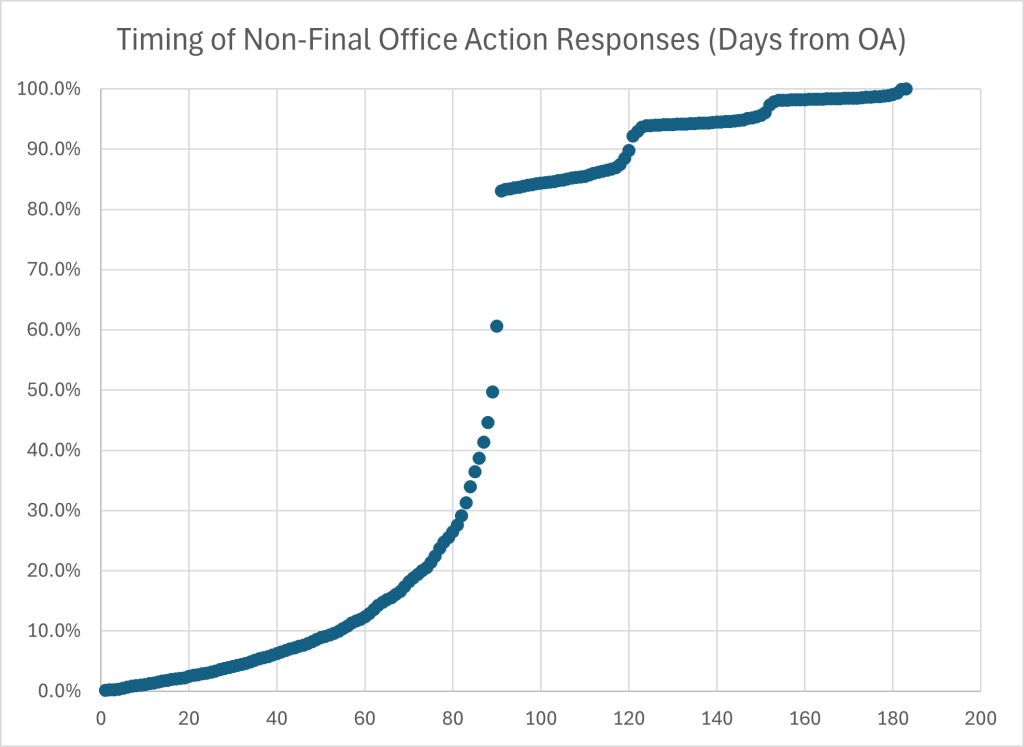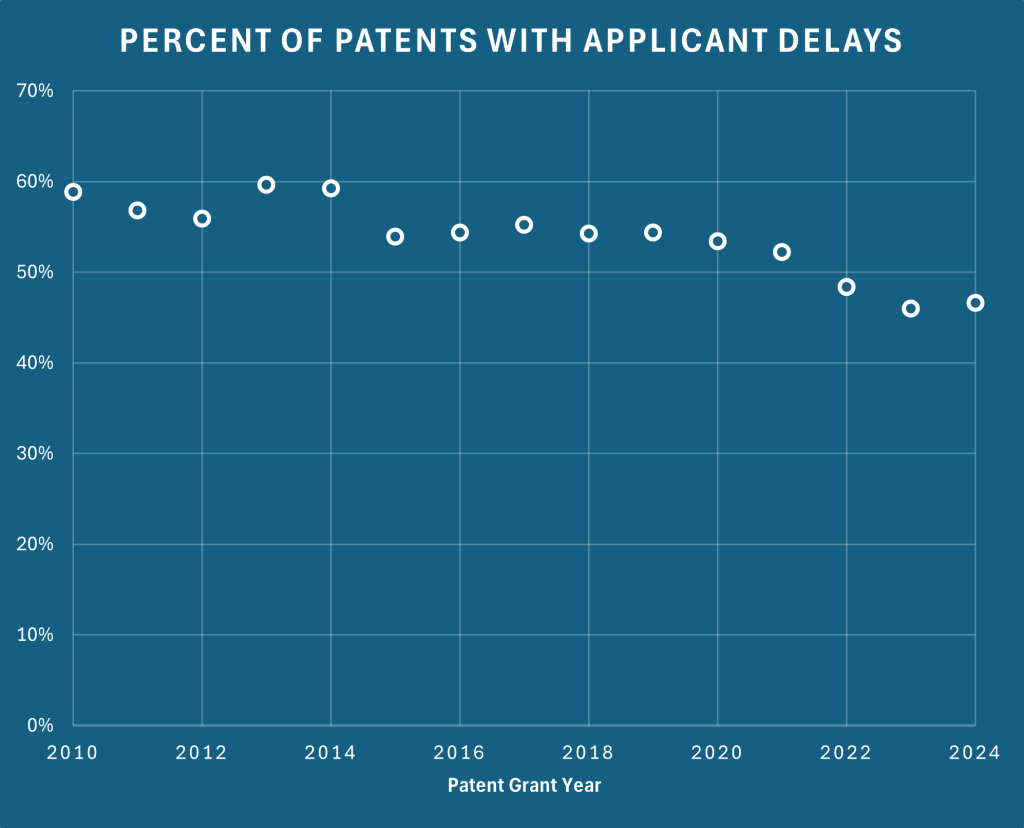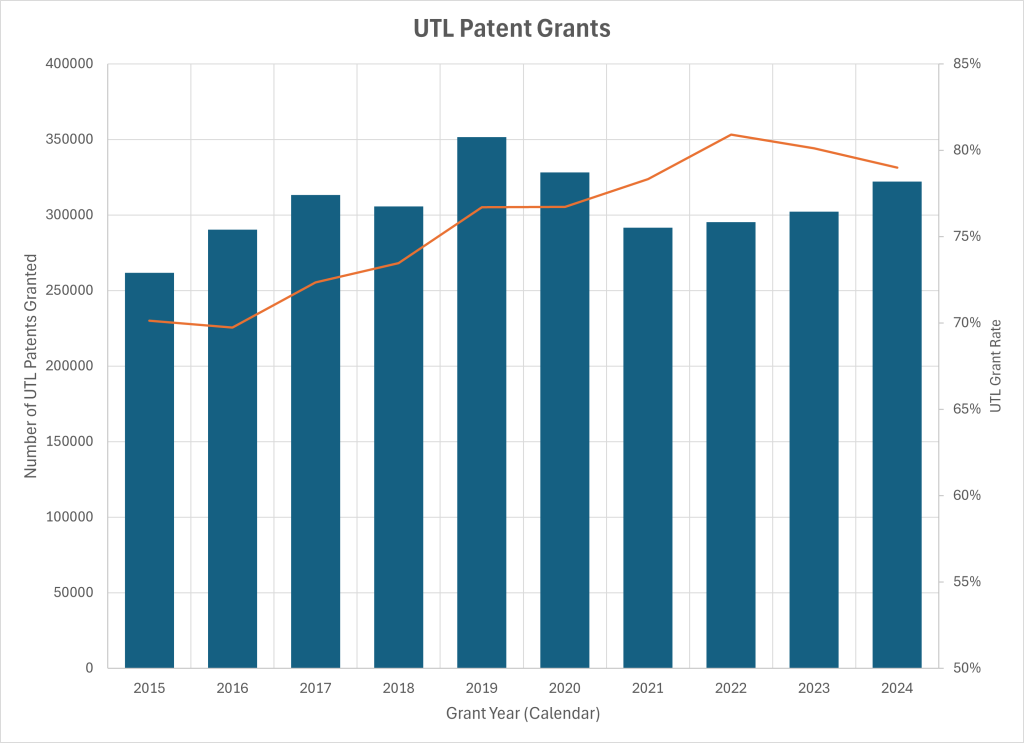On January 13, 2025, the Federal Circuit issued a notable opinion on federal preemption of state law conversion (theft) claims and correction of inventorship. In BearBox LLC v. Lancium LLC, No. 2023-1922 (Fed. Cir. Jan. 13, 2025), the court affirmed the District of Delaware’s grant of summary judgment, holding that federal patent law preempted BearBox’s Louisiana state law conversion claim. The court also affirmed that BearBox failed to prove by clear and convincing evidence that Austin Storms should be listed as an inventor of U.S. Patent No. 10,608,433.
The dispute arose from a chance encounter at a Bitcoin mining conference in May 2019. After a brief conversation at cocktail hour and dinner between BearBox’s founder Austin Storms and Lancium’s co-founder Michael McNamara, Storms sent a single follow-up email with four attachments describing BearBox’s technology. Five months later, in October 2019, Lancium filed a patent application that ultimately issued as the ‘433 patent, naming McNamara and Raymond Cline as inventors, but not Storms. (Claim 1 is listed below). The patent covered methods and systems for adjusting power consumption based on power option agreements – a concept that BearBox claimed Storms had conceived and shared with Lancium at the conference. BearBox sued, asserting both correction of inventorship under federal patent law and conversion under Louisiana state law.
State Law Preemption: The preemption issue presents an important question about the intersection of state tort law and federal patent protection. While state law conversion claims are not automatically preempted by federal patent law, the Federal Circuit found that BearBox’s particular claim as pled sought “patent-like protection” for unpatented technology and thus ran afoul of longstanding Supreme Court precedent. The court relied heavily on Bonito Boats, Inc. v. Thunder Craft Boats, Inc., 489 U.S. 141 (1989), which held that states may not offer patent-like protection to intellectual creations that would otherwise remain unprotected under federal law. The Bonito Boats Court emphasized that “the efficient operation of the federal patent system depends upon substantially free trade in publicly known, unpatented design and utilitarian conceptions.”
The Federal Circuit’s analysis focused on how BearBox pled its conversion claim, rather than the abstract elements of Louisiana conversion law. The court noted that BearBox’s complaint was “replete with ‘patent-like’ language typically invoked when a party asserts inventorship or infringement of a patent.” This included allegations that Storms had “conceived, developed, and reduced to practice” the technology and that Lancium had engaged in “improper and unauthorized use.” The prayer for relief seeking damages based on Lancium’s use and monetization of the technology particularly troubled the court, as it effectively sought patent-like remedies. Ultimately, the court concluded:
Here, we agree with the district court that BearBox’s conversion claim is preempted because the conversion claim, as pled, is essentially an inventorship cause of action and patent infringement cause of action, and thus seeks “patent-like protection” for ideas that are unprotected under federal law.
The court distinguished this case from situations where state law claims might validly protect against misappropriation without conflicting with federal patent policy. For instance, trade secret claims often survive preemption analysis, as the Supreme Court recognized in Kewanee Oil Co. v. Bicron Corp., 416 U.S. 470 (1974). But here, BearBox’s technology was neither patented nor kept as a trade secret – instead, it was “freely shared with others” and “otherwise in the public domain.” The Federal Circuit emphasized that federal patent law generally precludes recovery for a defendant’s use of an unpatented discovery after the plaintiff makes it publicly available.*
What particularly doomed BearBox’s conversion claim was its attempt to recover damages analogous to patent remedies. The court noted that under Louisiana conversion law, damages are typically limited to return of the converted property or its value at the time of conversion. But BearBox sought ongoing royalties and lost profits – remedies that mirror 35 U.S.C. § 284’s provision for patent infringement damages. As the court explained, allowing such recovery would effectively grant BearBox patent-like control over technology it had freely disclosed, undermining Congress’s careful balance between innovation incentives and public access to ideas.
In my view, this decision is somewhat dangerous because of its potential to undermine state law cases that have protected individuals in idea-submission scenarios. Courts have long recognized claims where someone provides an idea to a company and seeks compensation when the company uses it without permission or payment These are typically tied into breach of (implied) contract or misappropriation as part of a confidential relationship. See, Desny v. Wilder, 46 Cal. 2d 715 (1956); Hoeltke v. C.M. Kemp Mfg. Co., 80 F.2d 912 (4th Cir. 1935); Aronson v. Quick Point Pencil Co., 440 U.S. 257 (1979). In Aronson, the Court upheld a contract requiring payment for use of an invention even after a patent application was rejected, distinguishing this from state law protection that would prevent others from using publicly available information. See also Softel, Inc. v. Dragon Med. & Sci. Communs., 118 F.3d 955 (2nd Cir. 1997); Nadel v. Play-By-Play Toys & Novelties, Inc., 208 F.3d 368 (2nd Cir. 2000).
* I want to note one procedural oddity here. The appellate court based its decision here at least partially on the factual finding that the technology here was not kept secret but instead had been “freely shared with others” and “otherwise in the public domain.” The district court made those conclusions following the bench trial on inventorship. But, the those facts were still in contention at the summary judgment stage when the district court decided the preemption issue. And, normally an appellate court reviews the summary judgment record independently, applying the same standards as the district court to determine whether summary judgment was appropriate. This issue probably deserves some additional research, but it is not clear to me that the court appropriately relied upon the publicly-available status of the submissions in its review of the summary judgment.
Inventorship Claims Fail Due to Lack of Clear and Convincing Evidence
Apart from the state law claim, BearBox also claimed inventorship rights under 35 U.S.C. § 256. That statute provides a court with authority to order correction of inventorship when it determines an inventor has been erroneously omitted from a patent. However, patent issuance creates a presumption that the named inventors are the true and only inventors, and the late-coming inventor faces the heavy burden of proving inventorship by clear and convincing evidence.
A key challenge for BearBox was the requirement that an alleged joint inventor’s testimony must be corroborated by independent evidence. As the Federal Circuit has long held, “an alleged co-inventor must supply evidence to corroborate his testimony.” Ethicon, Inc. v. U.S. Surgical Corp., 135 F.3d 1456 (Fed. Cir. 1998). While corroborating evidence can take various forms – including contemporaneous documents, physical evidence, circumstantial evidence about the inventive process, or testimony from others – BearBox’s case rested primarily on four attachments sent in a single email: a product specification sheet, an annotated system diagram, hardware component specifications, and a data file modeling system simulation.
The district court’s analysis, which the Federal Circuit affirmed, found these materials insufficient to establish Storms’ inventorship claims. First, Storms himself admitted that the hardware component specifications had nothing to do with the subject matter of the ‘433 patent. More fundamentally, for the remaining documents, BearBox could not establish either that Storms had conceived of the claimed invention or that he had communicated any relevant information prior to Lancium’s independent conception. This timing issue proved particularly problematic because Lancium had filed a prior patent application in February 2018 – fifteen months before Storms ever met anyone from Lancium – disclosing many key aspects of the technology.
To qualify as a joint inventor, an individual must “show that he contributed significantly to the conception—the definite and permanent idea of the invention—or reduction to practice of at least one claim.” Blue Gentian, LLC v. Tristar Prod., Inc., 70 F.4th 1351 (Fed. Cir. 2023). These contributions must arise from “some element of joint behavior, such as collaboration or working under common direction.” Kimberly-Clark Corp. v. Procter & Gamble Distrib. Co., Inc., 973 F.2d 911 (Fed. Cir. 1992). The Federal Circuit found no error in the district court’s conclusion that the limited interaction between Storms and Lancium – essentially one dinner conversation and a single email – failed to establish the required level of collaboration or significant contribution to conception.
BearBox raised several procedural challenges to the district court’s inventorship analysis, but none proved persuasive. The Federal Circuit rejected BearBox’s argument that the district court improperly excluded as hearsay Storms’ testimony about what he told McNamara at dinner. While acknowledging some merit to the argument that the testimony was offered for a non-hearsay purpose (to prove notice rather than truth), the court found that BearBox’s failure to make an offer of proof about what the testimony would have been was “fatal” to preserving the issue for appeal.
The Federal Circuit also dismissed BearBox’s criticism of the district court’s element-by-element analysis of the patent claims. At oral arguments BearBox’s counsel argued:
All claims, or maybe most, the majority of claims, are a combination of known elements. And so, if the District Court is looking at the elements in isolation for evidence of earlier conception or conception, it will always be found.
While BearBox argued that the court should have considered claim elements in combination, the Federal Circuit found no error in the limitation-by-limitation approach given that BearBox needed to demonstrate Storms’ significant contribution to at least one claim. The court noted that this analysis actually mirrored how BearBox itself had presented its case in post-trial briefing.
= = =
The appellate panel also affirmed the district court’s exclusion of Dr. McClellan’s supplemental expert report, which had been filed three weeks before trial and five months after the close of expert discovery.
= = =
The Federal Circuit panel consisted of Judges Chen, Bryson, and Stoll, with Judge Stoll writing the opinion. The case was appealed from the District of Delaware where Judge Williams presided. Benjamin Horton argued the case for BearBox who was also represented by John Labbe, Chelsea Murray, and Raymond Ricordati of Marshall Gerstein. Mark Nelson argued for Lancium and was joined on the brief by other Barnes & Thornburg lawyers, including Adam Kaufmann and Chad Stover.
= = =
Claim 1. A system comprising:
a set of computing systems, wherein the set of computing systems is configured to perform computational operations using power from a power grid;
a control system configured to:
monitor a set of conditions;
receive power option data based, at least in part, on a power option agreement, wherein the power option data specify: (i) a set of minimum power thresholds, and (ii) a set of time intervals, wherein each minimum power threshold in the set of minimum power thresholds is associated with a time interval in the set of time intervals;
responsive to receiving the power option data, determine a performance strategy for the set of computing systems based on a combination of at least a portion of the power option data and at least one condition in the set of conditions, wherein the performance strategy comprises a power consumption target for the set of computing systems for each time interval in the set of time intervals, wherein each power consumption target is equal to or greater than the minimum power threshold associated with each time interval; and
provide instructions to the set of computing systems to perform one or more computational operations based on the performance strategy.




